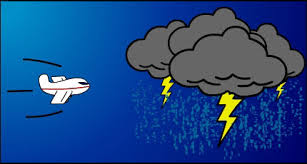What will higher ed be like in 2015? Since the kids are already born, the demographers can speak with chilling precision about the number of US college age students over the next decade or so. It’s a different demographic than we have been accustomed to. The US Census estimates that the number of 14 – 17 year olds will decline for the next decade, then rise by 2030:
16,655,000 right now
16,582,000 in 2020
16,562,000 in 2025
17,730,000 in 2030
In other words, the pool of students of the traditional college age will slump over the next few years then a steady rise through 2050. Those numbers have to be studied in relation to three other trends: First, the US population is moving south and west, out of the traditional heartland of high school Latin and college Greek. Second, the ethnic mix, as we all know, is shifting as well. Third, the two growth areas in higher education, two year colleges and for-profit programs, are likely to enroll a larger percentage of students; these institutions have very weak offerings in the Classics, and indeed in all humanistic and related social scientific fields. If Obama succeeds in his plan to make community college education tuition-free for US high school graduates, many of them will head there rather than to four year institutions, perhaps without thinking much about what’s best for their long-term success and satisfaction. To judge from web-site descriptions of the current shape of community college curricula, their students rarely encounter what, under labels such as “general education”, was once considered an essential component of a college education, and a basis for selecting a major. Without a broad and rigorous introduction to the ancient world graduates of community colleges are unlikely to pursue the Classics or other humanistic fields in the final two years of their college education.
That, paradoxically, is a bright spot in th otherwise bleak prospect for humanistic education. Some leaders of higher education are aware of the problem of preparing community college students to take full advantage of the opportunities in four year institutions. There’s been some fresh thinking on the matter, notably by the Association of American Colleges and Universities. A recent report, The LEAP Challenge: Education for a World of Unscripted Problems lays out one approach, which Classicists could readily adapt and contribute to.
Classicists, I believe, have a special responsibility –and opportunity – to work to strengthen such broad and challenging structures, both at their home institutions and at their interface with local community colleges. With colleagues in other humanistic fields, classicists can take the lead in helping institutions imagine what a strong general education, including in-depth study of ancient Greece and Rome, can be today. Such an education should be available to every entering college student. It’s not a genuine college education without that opportunity for all students.
We can and should say that loud and clear at every opportunity. But it won’t happen if we continue using the wrong metric – the number of majors when administrators allocate resources; the number of graduates going on to graduate school when faculty assess their own achievement. Hard imaginative work to strengthen education in the first two years of college is the key to success and deserves to be recognized and rewarded at every stage.
That’s the best way I can see to make sure that Classics will be in a strong position in a decade’s time.

 RSS Feed
RSS Feed
